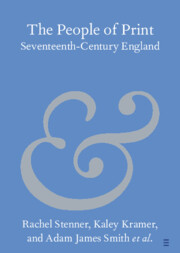Element contents
The People of Print
Published online by Cambridge University Press: 18 May 2023
Summary
- Type
- Element
- Information
- Online ISBN: 9781009380676Publisher: Cambridge University PressPrint publication: 08 June 2023
Bibliography
- 3
- Cited by



